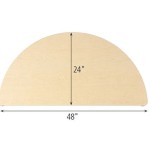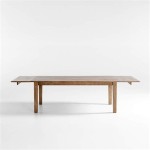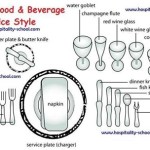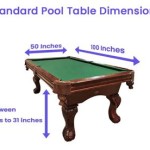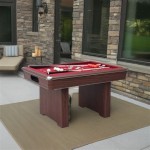What Do I Need to Repaint a Table and Chairs in Jakarta?
Repainting furniture, particularly tables and chairs, is a cost-effective and creative way to refresh the appearance of a living space within the bustling environment of Jakarta. Jakarta’s humid climate and sometimes abrasive urban environment can accelerate the wear and tear on furniture finishes. Consequently, knowing the necessary materials and techniques for a successful repaint is essential for residents looking to maintain or improve their furniture's aesthetics and longevity.
This article outlines the essential tools, materials, and considerations for repainting a table and chairs in Jakarta, catering to both seasoned DIY enthusiasts and those new to furniture restoration. It addresses the specific challenges presented by the local environment and offers guidance on selecting appropriate products and techniques.
Before beginning any repainting project, proper preparation is crucial. This involves gathering the necessary tools, understanding the existing finish, and creating a suitable workspace. Skipping this step can lead to subpar results and potentially damage the furniture.
Essential Tools and Materials
Successfully repainting furniture requires a specific set of tools and materials. The selection of these items depends on the type of paint being used, the existing finish on the furniture, and the desired final outcome. A well-equipped workspace will significantly improve the efficiency and quality of the repainting process.
Firstly, a variety of sandpaper is essential for surface preparation. Coarse grit sandpaper (around 80-120 grit) is used for removing existing paint or varnish, while medium grit sandpaper (around 150-180 grit) is used for smoothing out imperfections and preparing the surface for priming. Fine grit sandpaper (around 220 grit or higher) is used for creating a smooth finish between coats of paint. The amount of sandpaper needed depends on the size of the furniture and the extent of the existing finish needing removal. Consider purchasing a sanding block or orbital sander to expedite the sanding process, particularly for larger surfaces.
Cleaning supplies are vital for removing dust, grease, and other contaminants from the furniture surface. These include: a mild detergent (such as dish soap), clean cloths (microfiber cloths are recommended for their lint-free properties), a scrub brush (for removing stubborn dirt), and tack cloths (for removing fine dust particles after sanding). Thorough cleaning ensures proper paint adhesion and prevents imperfections in the final finish.
A primer is a crucial component for achieving a durable and even paint finish. It serves as a bonding agent between the existing surface and the new paint. Select a primer appropriate for the type of material the furniture is made of (wood, metal, plastic). Oil-based primers are typically more durable and offer better adhesion but require mineral spirits for cleanup. Water-based primers are easier to clean up and have lower VOCs (volatile organic compounds) but may not be as effective on certain surfaces. Consider pigmented primers to help achieve better coverage with the topcoat, especially when painting a dark surface a lighter color.
The type of paint chosen will significantly impact the final appearance and durability of the furniture. Options include: latex paint (water-based, easy to clean, low VOCs), oil-based paint (durable, glossy finish, requires mineral spirits for cleanup), acrylic paint (versatile, water-based, suitable for various surfaces), spray paint (convenient for intricate details and even coverage, but requires proper ventilation), and chalk paint (matte finish, often used for creating a distressed look). Consider the intended use of the furniture and the desired aesthetic when selecting the paint. For furniture that will experience heavy use, a more durable paint, like oil-based or a high-quality acrylic, is recommended. Ensure the paint is suitable for the Jakarta climate, considering humidity and potential exposure to sunlight. Look for paints specifically formulated for outdoor use if the furniture will be placed on a patio or balcony.
Application tools vary depending on the type of paint being used. Paintbrushes (synthetic or natural bristles, depending on the paint type) are essential for applying paint to intricate areas and edges. Paint rollers (foam or nap rollers, depending on the desired finish) are used for covering larger surfaces quickly and evenly. A paint tray is necessary for holding the paint while using a roller. Painter's tape is used for masking off areas that should not be painted, such as hardware or trim. Consider purchasing a paint sprayer for achieving a professional-looking finish, but be aware that this requires practice and proper ventilation.
Protective gear is important for safety during the repainting process. This includes: a respirator or dust mask (to protect against dust and fumes), safety glasses (to protect the eyes from splashes and debris), and gloves (to protect the hands from paint and chemicals). A drop cloth or plastic sheeting is essential for protecting the surrounding area from paint drips and spills.
Finally, for detailed work and touch-ups, consider having artist brushes in various sizes, small containers for mixing custom colors, and stirring sticks for ensuring consistent paint consistency. A putty knife or scraper can be helpful for removing old paint or filling in imperfections before sanding.
Surface Preparation and Painting Techniques
The quality of the surface preparation directly influences the final result of the repainting project. A properly prepared surface ensures that the paint adheres correctly and that the final finish is smooth and even. Neglecting this step can lead to paint peeling, chipping, and an overall unprofessional appearance.
The first step is to clean the furniture thoroughly. Remove any loose dirt, dust, or debris with a brush or vacuum cleaner. Wash the furniture with a mild detergent and water, using a scrub brush to remove stubborn stains or grime. Rinse the furniture thoroughly with clean water and allow it to dry completely before proceeding to the next step. For furniture with grease or wax buildup, consider using a degreaser to ensure proper paint adhesion.
Sanding is a crucial step in surface preparation, as it creates a textured surface that allows the paint to adhere better. Start with coarse-grit sandpaper (80-120 grit) to remove any existing paint, varnish, or imperfections. Sand in the direction of the wood grain (if applicable) to avoid scratching the surface. Once the old finish has been removed, switch to medium-grit sandpaper (150-180 grit) to smooth out any remaining imperfections and prepare the surface for priming. Finally, use fine-grit sandpaper (220 grit or higher) to create a smooth, even surface for the primer. After sanding, remove all dust particles with a tack cloth, ensuring a clean surface for painting.
Applying primer is essential for achieving a durable and even paint finish. Select a primer that is compatible with the type of material the furniture is made of (wood, metal, plastic) and the type of paint being used. Apply the primer in thin, even coats, following the manufacturer's instructions. Allow the primer to dry completely before proceeding to the next step. If the surface is particularly porous or has deep imperfections, consider applying a second coat of primer. Sand the primed surface lightly with fine-grit sandpaper to create an even smoother surface for the paint.
When painting, apply the paint in thin, even coats, following the manufacturer's instructions. Avoid applying too much paint at once, as this can lead to drips and runs. Use a paintbrush for intricate areas and edges, and a roller for larger surfaces. Allow each coat of paint to dry completely before applying the next coat. Depending on the type of paint and the desired level of coverage, two or three coats may be necessary. Sand the painted surface lightly with fine-grit sandpaper between coats to create an even smoother finish. For spray painting, hold the can approximately 10-12 inches from the surface and apply the paint in smooth, even strokes. Avoid spraying too much paint in one area, as this can lead to drips and runs. Ensure adequate ventilation when using spray paint.
After the final coat of paint has dried completely, consider applying a clear coat sealant to protect the paint and enhance its durability. Select a sealant that is compatible with the type of paint being used. Apply the sealant in thin, even coats, following the manufacturer's instructions. Allow the sealant to dry completely before using the furniture. The choice of sealant (matte, satin, or gloss) will affect the final appearance of the piece.
Addressing Jakarta’s Climate and Specific Challenges
Jakarta's tropical climate presents unique challenges when repainting furniture. High humidity and frequent temperature fluctuations can affect the drying time of paint and increase the risk of mold and mildew growth. Additionally, the air quality in Jakarta can be poor, with high levels of dust and pollution, which can contaminate the paint finish.
Selecting appropriate paint and primers is crucial for addressing these challenges. Choose paints and primers that are specifically formulated for humid climates and are resistant to mold and mildew growth. Acrylic paints are often a good choice for Jakarta, as they are durable, water-resistant, and relatively easy to clean. Consider using paints with UV protection to prevent fading and discoloration from sunlight exposure. For outdoor furniture, opt for paints specifically designed for outdoor use, as they are more resistant to the elements.
Proper ventilation is essential during the painting process, especially when using oil-based paints or spray paints. Open windows and doors to ensure adequate airflow. If possible, paint the furniture outdoors in a shaded area to avoid direct sunlight. This will help the paint dry more evenly and prevent it from blistering or cracking. When painting indoors, use a fan to circulate the air and speed up the drying process.
Jakarta's air pollution can contaminate the paint finish, leading to a dull or uneven appearance. To minimize this risk, paint the furniture in a clean, dust-free environment. Cover the surrounding area with drop cloths or plastic sheeting to prevent dust from settling on the wet paint. Use a tack cloth to remove any dust particles from the surface before painting. If possible, paint the furniture during periods of lower air pollution, such as early morning or late evening.
The humidity in Jakarta can significantly extend the drying time of paint. Allow the paint to dry completely between coats, even if it feels dry to the touch. Use a dehumidifier to reduce the humidity in the room and speed up the drying process. Avoid painting the furniture during periods of high humidity or rainfall. If condensation forms on the surface of the wet paint, wipe it off immediately with a clean cloth.
Mold and mildew growth can be a common problem in Jakarta's humid climate. To prevent this, clean the furniture thoroughly with a mold and mildew cleaner before painting. Consider adding a mold inhibitor to the paint to further protect it from fungal growth. Store the furniture in a dry, well-ventilated area to prevent mold and mildew from forming after painting.
The availability of specific paint brands and supplies can vary within Jakarta. Research local hardware stores and paint suppliers to determine the availability of the desired products. Consider purchasing paints and primers online to ensure access to a wider selection of brands and colors. Check customer reviews and ratings to ensure the quality of the products. Consider purchasing high-quality brushes and rollers, as they will provide a better finish and last longer in Jakarta’s climate.
When dealing with older furniture in Jakarta, be aware of potential lead paint hazards. If the furniture was painted before the 1970s, it may contain lead-based paint. Take precautions to avoid exposure to lead dust, such as wearing a respirator mask and wet sanding to minimize dust particles. Dispose of lead paint debris properly according to local regulations.

Jual Solid Wood Furniture Refinishing Paint Floor Color Paste Repair Pen Jakarta Pusat Westside Share Tokopedia

Jual New Furniture Refinishing Paint Wood Door Floor Scratch Repair Cs Kayu 1pcs Kota Administrasi Jakarta Utara Cimorine Tokopedia

A Small Table Classic Design For Room

Arti Paintbar Cafe Manual Jakarta

Perancangan Furnitur Dan Aksesoris Pada Kafe Komunitas Motor Di Jakarta Interior

Jual Masking Tape Plastik 110cm X 30m Penutup Furniture Repaint Mobil Kota Administrasi Jakarta Utara Sablonsps Tokopedia

Teak Wood Dressing Table And Mirror With Antique Jepara Carvings

Coffee Table With Unique Inlay Design For Guest Room

Tide And Table Manual Jakarta

Furniture Kayu Arsip Pintu Solid Jakarta
Related Posts

